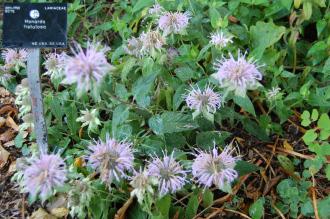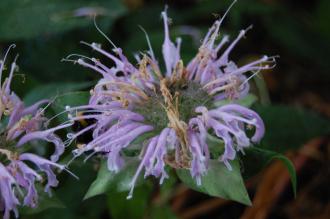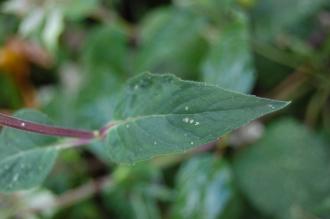
Monarda fistulosa (17/08/2014, Kew Gardens, London)
Position: Full sun to partial shade
Flowering period: Summer
Soil: Moist, well drained
Eventual Height: 90cm
Eventual Spread: 80cm
Hardiness: 3b, 4a, 4b, 5a, 5b, 6a, 6b, 7a, 7b, 8a, 8b, 9a, 9b
Family: Lamiaceae
Monarda fistulosa is a deciduous herbaceous perennial with a clump forming habit. Its dark green leaves of the plant are typically lanceolate with entire margins, up to 8cm long and 3cm broad. Its pale purple flowers appearing in the form of tubular flowers in dense terminal whorls and are up to 4cm across. Its roots are rhizomes which aids its spread.

Monarda fistulosa Flower (17/08/2014, Kew Gardens, London)
Monarda fistulosa, commonly known as Wild Bergamot or Bee Balm, is native to much of North America. In its native habit it grows in dry fields, thickets and clearings.
The etymological root of the binomial name Monarda is named after Nicholas Monardez, a 16th Century physician and botanist of Seville. Fistulosa is derived from the Latin fistula meaning ‘tube’.
The landscape architect may find Monarda fistulosa useful as part of a mixed herbaceous planting scheme. It is a suitable plant for a wild life garden. Once established this plant is some what drought tollerant.
Ecologically, Monarda fistulosa flowers are is attractive to pollinating insects. Humming birds are also attracted to this plant.

Monarda fistulosa Leaf (17/08/2014, Kew Gardens, London)
Monarda fistulosa prefers moist, fertile, well-drained soils. It tolerates most pH of soil.
Monarda fistulosa requires little maintenance. This plant may divided on a regular basis to keep its vigor. This pant may be dead headed to promote longer flowering.

